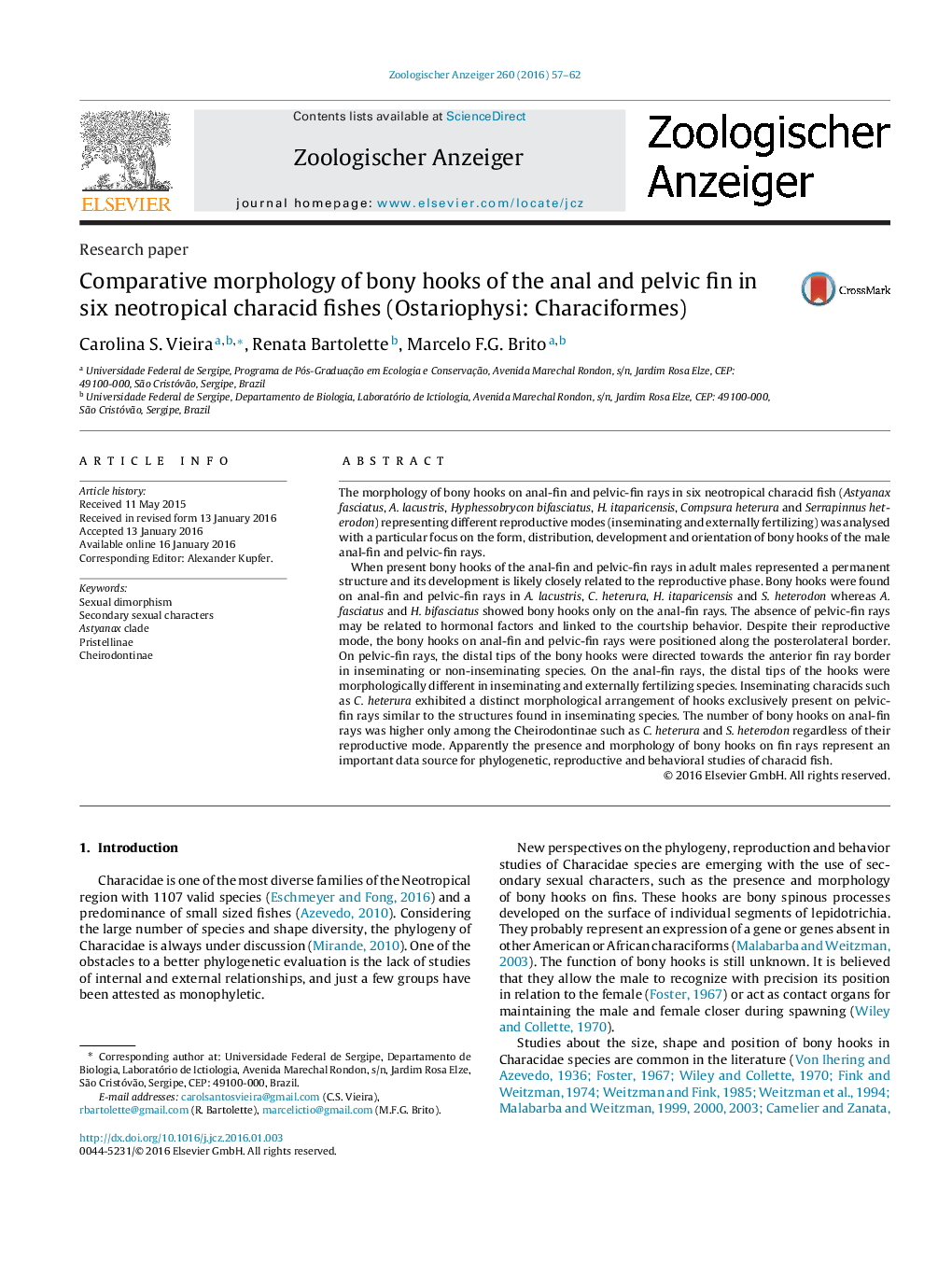| Article ID | Journal | Published Year | Pages | File Type |
|---|---|---|---|---|
| 2790477 | Zoologischer Anzeiger - A Journal of Comparative Zoology | 2016 | 6 Pages |
Abstract
When present bony hooks of the anal-fin and pelvic-fin rays in adult males represented a permanent structure and its development is likely closely related to the reproductive phase. Bony hooks were found on anal-fin and pelvic-fin rays in A. lacustris, C. heterura, H. itaparicensis and S. heterodon whereas A. fasciatus and H. bifasciatus showed bony hooks only on the anal-fin rays. The absence of pelvic-fin rays may be related to hormonal factors and linked to the courtship behavior. Despite their reproductive mode, the bony hooks on anal-fin and pelvic-fin rays were positioned along the posterolateral border. On pelvic-fin rays, the distal tips of the bony hooks were directed towards the anterior fin ray border in inseminating or non-inseminating species. On the anal-fin rays, the distal tips of the hooks were morphologically different in inseminating and externally fertilizing species. Inseminating characids such as C. heterura exhibited a distinct morphological arrangement of hooks exclusively present on pelvic-fin rays similar to the structures found in inseminating species. The number of bony hooks on anal-fin rays was higher only among the Cheirodontinae such as C. heterura and S. heterodon regardless of their reproductive mode. Apparently the presence and morphology of bony hooks on fin rays represent an important data source for phylogenetic, reproductive and behavioral studies of characid fish.
Related Topics
Life Sciences
Agricultural and Biological Sciences
Animal Science and Zoology
Authors
Carolina S. Vieira, Renata Bartolette, Marcelo F.G. Brito,
